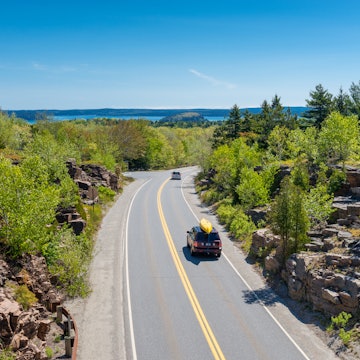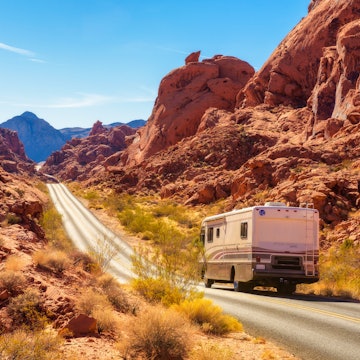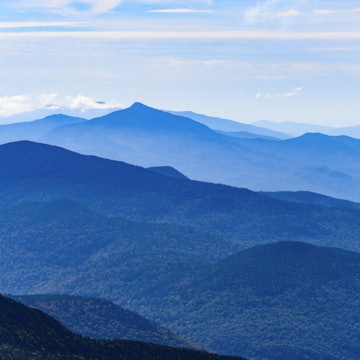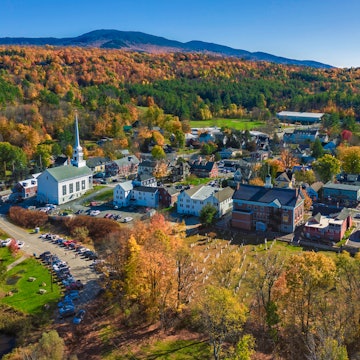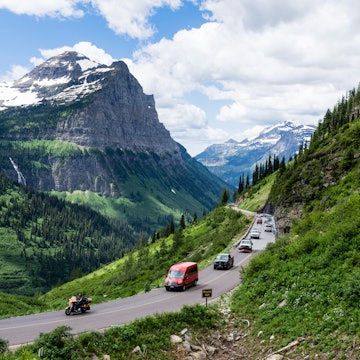

Hiking in Yosemite. EyeEm Mobile GmbH/Getty Images
Days are getting shorter and there’s a chill in the air, which can only mean one thing – peak hiking season is almost here. Sure, many would say spring and summer are the top times for hitting the trails. But take a look below at the best cold-weather hiking experiences in the US – including snow-covered forests, a candlelight stroll, and a canyon adventure without the crowds – and it’s clear that winter has plenty to offer.
Lace up your boots or grab a pair of snowshoes and poles and get moving. There’s no need for hikers to hibernate.
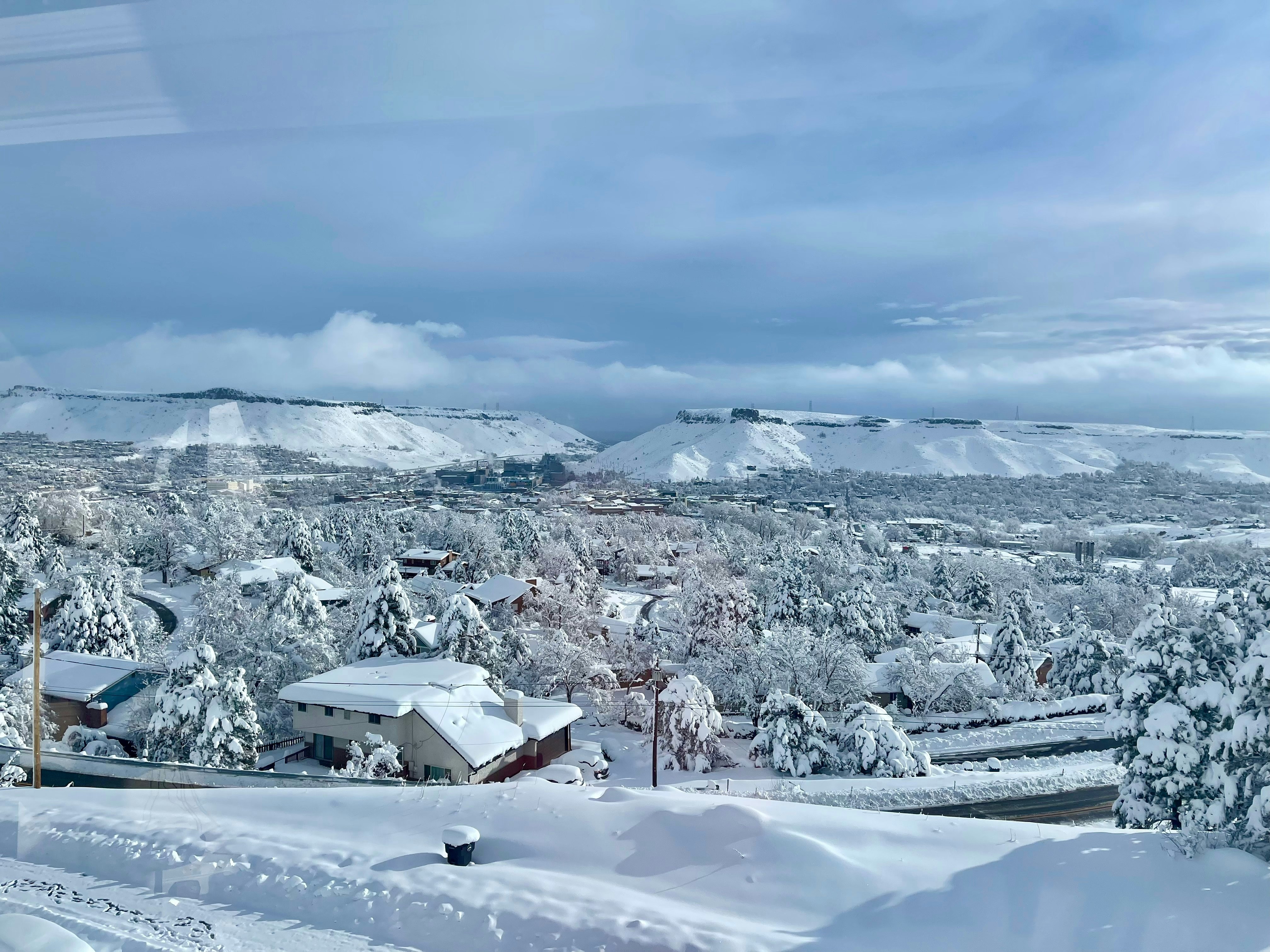
1. Apex Park Loop, Golden, Colorado
Distance: 5.5 miles
Difficulty: moderate
You don’t have to go too far outside of Denver to slip on a pair of snowshoes and experience an enchanted forest. Apex Park, which is about 30 minutes from the “Mile High City”, offers a year-round trail system that’s prime for snowshoeing and deer spotting. To create a 5.5-mile loop, start at the Argos trail, then follow the Magic Mountain, Enchanted Forest and Apex trails. The Apex Trail is the one that loops back around and eventually connects with the Magic Mountain Trail to get you right back where you started from.
What you’ll need: Rent a pair of snowshoes and poles from the REI flagship store in downtown Denver or a locally owned outdoor shop, such as Feral in the Highlands neighborhood and Wilderness Exchange next to REI.
Where to stay: Gravity Haus Denver, part of an adventure-focused hotel chain that aims to connect people to the outdoors, has 17 stylish guest rooms, all with an industrial twist.
Where to eat: Don’t miss the botanically inspired bar and restaurant, Wildflower. Digging into wildflower focaccia and potato croquettes made with marigolds is the perfect way to end a nature-filled day.

2. Thompson County Park, West Saint Paul, Minnesota
Distance: 1.7 miles
Difficulty: easy
Dining by candlelight is nice, but hiking by candlelight is pure magic. Each January, Thompson County Park lines its paved trails with luminaries for an evening hike. It also offers free hot cocoa and access to warming bonfires strategically placed around the park for pre- or post-walk snuggling. Even when the Trails by Candlelight event isn’t happening, the paved trails, including a lakeside loop, make the park ideal for all-ages family strolls.
What you’ll need: Stick to the paved trails, and you’ll just need warm shoes. Or, if there’s fresh powder, bring snow boots. The park also has 1.41 miles of snowshoeing trails, so pack your clawed footwear and poles if interested.
Where to stay: Warm up fireside in a premium room at Lora Hotel in Stillwater, built in a reimagined 19th-century brewery and set on the banks of the Saint Croix River.
Where to eat: The Nook is a hole-in-the-wall burger and beer spot that also serves up all the Midwestern classics (cheese curds!). They're most famous for their take on the Juicy Lucy, a burger with melty cheese in the center of the patty. Stick around for bowling in their basement.

3. Yosemite Valley Loop Trail, Yosemite National Park, California
Distance: 11.5 miles
Difficulty: moderate
Yosemite is one of the most visited national parks in the country, and in the summer, the Yosemite Valley Loop is crawling with adventurists scrambling to get a gander at Sentinel Rock, Cathedral Rocks, and the most grandiose granite formation of them all – El Capitan. But in the winter, it’s another story. Get an eyeful without the crowds (or anyone at all if you go in the morning). The full loop is just under 12 miles, but it’s possible to do a half loop that’s only 7.2 miles.
What you’ll need: While most of the trail is flat and paved, you’re still likely to encounter ice and snow (especially on the south side). Wear snowshoes or throw a pair of ice cleats in your backpack to be safe. At the very least, go with snow boots with good traction. You’ll also want to bring plenty of water and snacks, as there aren’t places to stop along the way.
Where to stay: The closest you can get to sleeping on the loop is staying at Yosemite Valley Lodge, which has two restaurants and a lounge that serves brandy-spiked Mariposa Coffee – perfect for some aprés-hike action.
Where to eat: Crampons and exquisite culinary experiences can go hand in hand if you head over to The Ahwahnee hotel for dinner (though you should change out of your snowshoes before you go). Take in the legendary dining room’s soaring ceilings, grand chandeliers, and live piano music while you feast on prime rib and housemade tarts.
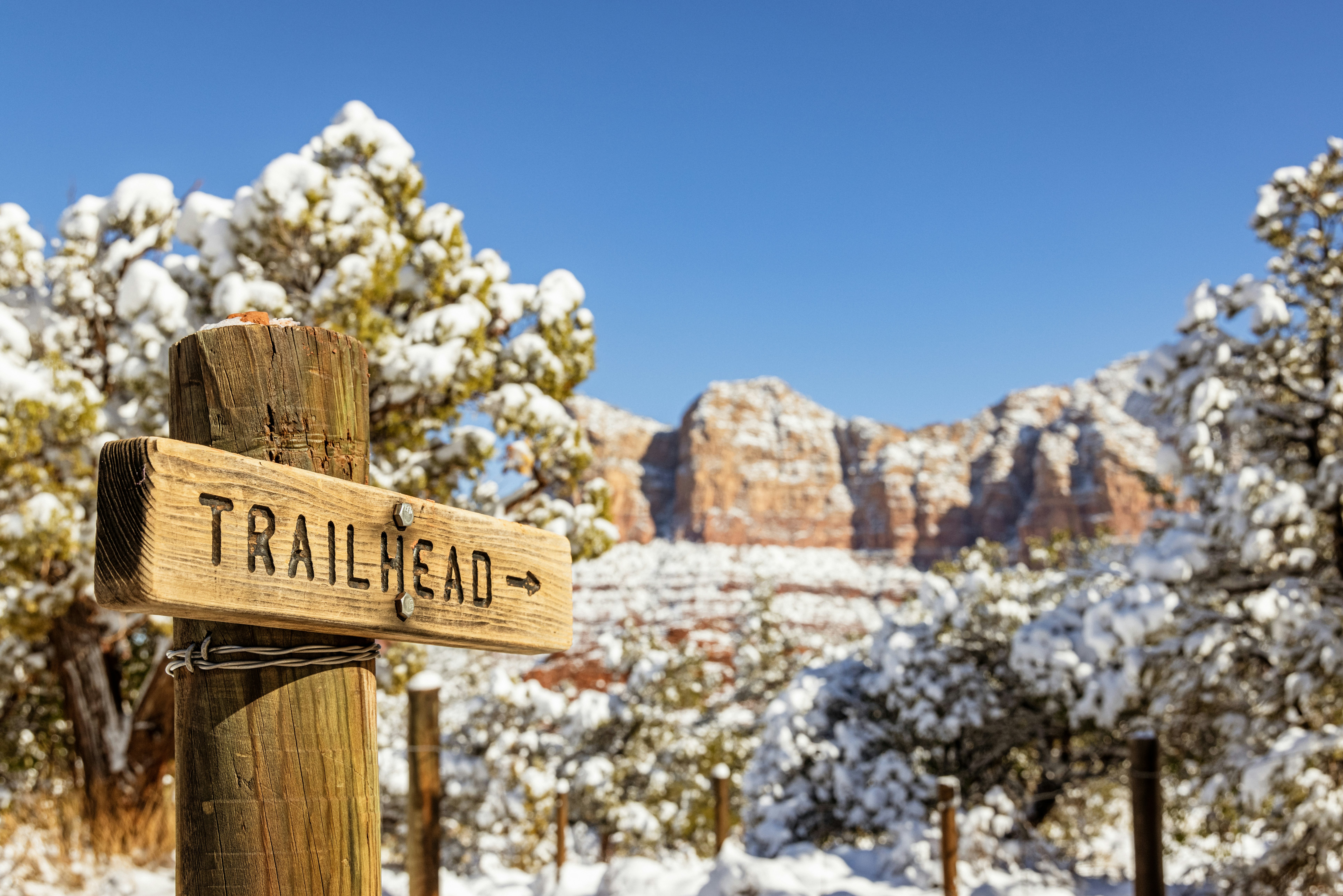
4. Boynton Canyon and the Subway Cave, Sedona, Arizona
Distance: 7.1 miles
Difficulty: moderate
Red rocks, towering sandstone cliffs, and mind-boggling rock formations are a sure way to keep the winter blahs at bay. The Boynton Canyon portion of the hike is relatively easy, with mostly flat terrain. To get to the Subway Cave, however, you’ll have to keep an eye out for a distinctive alligator juniper tree (the bark looks like the skin of an alligator) around the 2-mile mark – that’s your cue to veer off to the right on a more narrow trail. From there, it’s about a half mile to the cave, including scrambling up a sandstone incline, which is what makes this hike a moderate level. But once you get to the top and see the view – a red rock tunnel that looks like it’s separating to show off the lush canyon below – it’ll be worth it.
What you’ll need: Wear sneakers with good support (even better if you have hiking boots) and multiple layers. Average highs are mid-50°Fs to low-60°Fs (around 12°C to 17°C), but can be brisk if you’re heading out early. And don’t forget your water bottle or sunscreen.
Where to stay: Enchantment Resort is a wellness wonderland, with a 42,000-sq-ft spa called Mii ammo, in addition to 218 casita-style rooms and suites. The resort also, conveniently, backs up to Boynton Canyon.
Where to eat: Before your hike, head to Hummingbird – a restaurant inside Mii ammo – for a breakfast that’ll fuel your journey without making you feel lethargic. Avocado toast or a superfood cereal bowl are both solid choices.

5. Sterling Pond and Long Trail, Stowe, Vermont
Distance: 6 miles
Difficulty: difficult
Spend an afternoon snowshoeing in solitude on this remote route where you’ll likely have the trails to yourself. The area, known as Smugglers’ Notch, got its name from the smugglers who used to move supplies along the rugged path through the mountains to and from Canada. Today, the narrow pass lined with 1000-ft cliffs is a bucket-list destination for snowshoers. It is steep at times, so some snowshoeing experience is recommended.
What you’ll need: Here’s a trail where you’ll definitely want snowshoes. Rent them in Stowe at Ranch Camp, Umiak Outdoor Outfitters or Trapp Family Lodge.
Where to stay: If you’re aching for more snowshoeing action (or you’re just a fan of The Sound of Music), check in to the Trapp Family Lodge, built by the real von Trapp family. In addition to Austrian-inspired accommodations, the property has 40 miles of groomed trails for snowshoeing and cross-country skiing.
Where to eat: If you’ve ever wondered what Vermont would taste like in pizza form, find out at the Bench. Their Vermonter is covered in cheddar, blue cheese, apples and bacon, then drizzled with maple syrup.

6. San Antonio Hot Springs, Jemez Springs, New Mexico
Distance: 1.4 or 11.4 miles out and back
Difficulty: depending on starting point, easy to moderate
This hike includes a mid-route reward: a soothing soak in geothermal waters. The easiest option is to begin at the San Antonio Hot Springs Trailhead and hike about 0.7 miles to the springs. However, the last 5 miles leading to the trailhead is a dirt road that can make for a treacherous ride after the rain. A 4WD vehicle is highly recommended. Otherwise, extend your hike (it’ll make you appreciate the soak even more) and add the 5-mile dirt road to your walk.
What you’ll need: Water (there’s nowhere to stop along the way), hiking shoes or boots, a bathing suit and a change of clothes. Winter temperatures can range from 20°F to 50°F (-6°C to 10°C).
Where to stay: Maintain your calming vibes at Cañon del Rio, an adobe-style bed and breakfast where you can listen to the Jemez River while you sip your morning coffee.
Where to eat: Cowpokes, city folks, bikers and hikers alike pull up a stool at Los Ojos Restaurant & Saloon for classic northern New Mexican dishes like Frito pies and chile rellenos smothered in red and green sauce.









